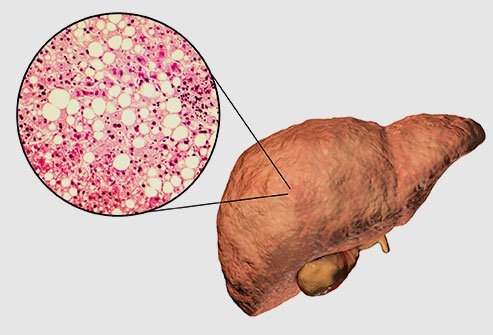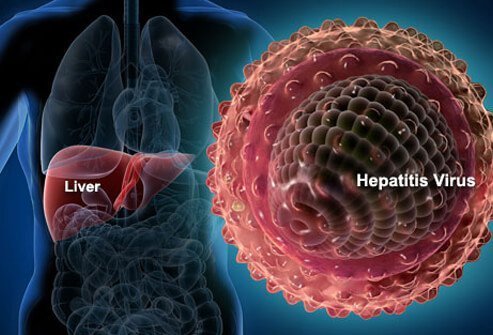
Fat buildup in the liver causes fatty liver disease.
Fatty liver disease occurs when excess fat builds up in the liver. While having some stored fat in the liver is normal, it can cause health problems when the fat exceeds 5%-10% of the weight of the liver.
Nearly 25%-30% of people in the United States are affected by fatty liver disease.
What is the main cause of fatty liver disease?
Your liver helps with fat metabolism, which is the process of breaking down fats. When you eat high amounts of fats regularly, your liver cannot metabolize all of it, leading to a buildup of excess fat in the liver.
Conditions that promote the accumulation of fat in the liver include:
Taking certain prescription medications also puts you at a greater risk of developing fatty liver disease:
What are the signs and symptoms of fatty liver disease?
Because fatty liver disease often does not cause any signs and symptoms, the condition may go unnoticed until it is discovered through imaging tests, such as an ultrasound.
If signs and symptoms do occur, they may include the following:
What are the different types of fatty liver disease?
Fatty liver disease is known by various terms, which can be confusing. Broadly, there are two types, depending on the cause:
1. Alcoholic fatty liver disease (AFLD)
Alcoholic fatty liver disease is caused by excessive consumption of alcohol. Excessive consumption of alcohol is defined as more than one drink a day for women and more than two drinks a day for men. About 5% of people in the United States are affected by this type of fatty liver disease.
2. Nonalcoholic fatty liver disease (NAFLD)
When fatty liver disease affects people who don’t drink or consume alcohol only in moderation, it is referred to as NAFLD. NAFLD is more common than AFLD, affecting 24% of adults and 10% of children (between ages 2-19) in the United States. The exact cause of the condition is not known, but other conditions such as diabetes increase your risk of developing it.
Nonalcoholic steatohepatitis (NASH) is the term given to the steatohepatitis stage of NAFLD. Only a small percentage of people with NAFLD progress to NASH, affecting 1.5%-6.5% of adults in the United States.

SLIDESHOW
Hepatitis C, Hep B, Hep A: Symptoms, Causes, Treatment See Slideshow
4 stages of fatty liver disease
For 7%-10% of people with the condition, fatty liver disease progresses through four stages:
- Stage I (simple fatty liver): At this stage, fat has accumulated in the liver without causing inflammation or scarring.
- Stage II (steatohepatitis): Accumulated fat causes inflammation in the liver and begins to damage it.
- Stage III (fibrosis): Over time, the inflammation starts converting healthy liver tissue into scar tissue.
- Stage IV (cirrhosis): When an extensive portion of the liver tissue turns into scar tissue, the stage is called liver cirrhosis or late-stage liver disease because the liver gets damaged to the point that function is severely impaired.
How do doctors diagnose liver disease?
You may not know that you have fatty liver disease for many years because the condition typically does not cause noticeable signs and symptoms. It is most often detected when your doctor orders tests for other conditions.
Abnormal liver function tests, specifically higher liver enzyme levels, are initial tests that signal a problem with your liver. To confirm a diagnosis, your doctor may order tests such as:
- Abdominal ultrasound: Uses sound waves to get a picture of the liver.
- Computed tomography scan (CT scan): Uses strong radiation to provide a detailed view of the liver.
- Liver biopsy: Small surgical procedure that involves removing a sample of liver tissue to determine the extent of liver damage. It is most commonly done in the liver cirrhosis stage.
- FibroScan®: A specialized ultrasound that may be used as an alternative to liver biopsy to determine the extent of liver damage.
Latest Digestion News
Daily Health News
Trending on MedicineNet
Is fatty liver disease serious?
Fatty liver disease rarely becomes a serious problem in the majority of people affected by the condition and can be reversed when detected in the earlier stages. Serious issues occur when the cirrhosis stage sets in.
Liver cirrhosis, which is characterized by extensive liver damage, hampers multiple functions of the liver. Your liver is unable to clear toxins from the blood. These toxins can then build up in the brain and lead to a life-threatening condition called hepatic encephalopathy, which can progress to coma.
Is it possible to cure fatty liver disease?
Fatty liver disease can be reversed if treated in the early stages. Studies suggest that mild to moderate liver fibrosis can also be reversed. The liver has an amazing ability to repair and regenerate itself.
However, it is difficult to reverse damage caused at the liver cirrhosis stage. The only thing you can do is obtain proper treatment to prevent it from worsening. In advanced cases, liver transplantation is the only option left.
There are no specific medications for fatty liver, but simple lifestyle changes and controlling the factors that contribute to its development can prevent the condition from worsening:
- Abstaining from alcohol
- Losing weight by following a healthy diet and exercising regularly
- Taking medications to control conditions such as:
If you want to lose weight, avoid drastic short-term weight loss. Aim to lose it gradually because rapid weight loss can worsen fatty liver disease.
Studies suggest that some diets, such as the Mediterranean diet, have benefitted people with fatty liver disease. Ask your doctor to refer you to a certified dietician or nutritionist, who can offer guidance on the best diet for your condition that suits your lifestyle.

QUESTION
Long-term heavy alcohol consumption can cause: See Answer
Medically Reviewed on 4/21/2022
References
Cleveland Clinic. Fatty liver disease. https://my.clevelandclinic.org/health/diseases/15831-fatty-liver-disease
Tommolino E. Fatty liver. Medscape. https://emedicine.medscape.com/article/175472-overview
National Institutes of Health. Definition & Facts of NAFLD & NASH. https://www.niddk.nih.gov/health-information/liver-disease/nafld-nash/definition-facts